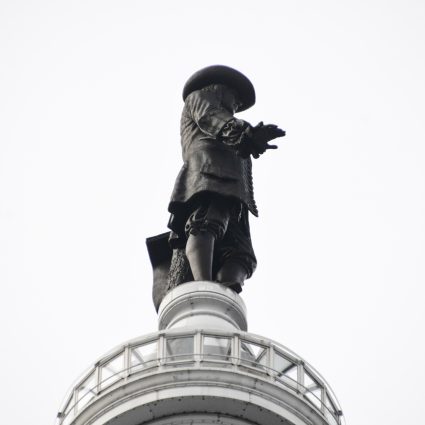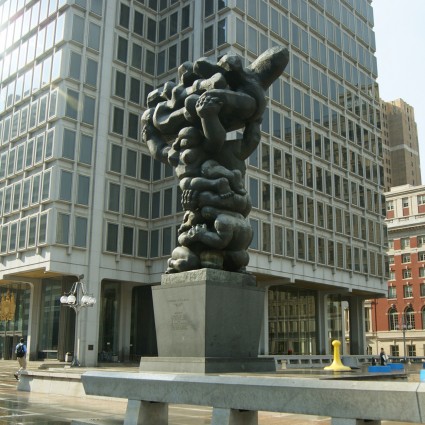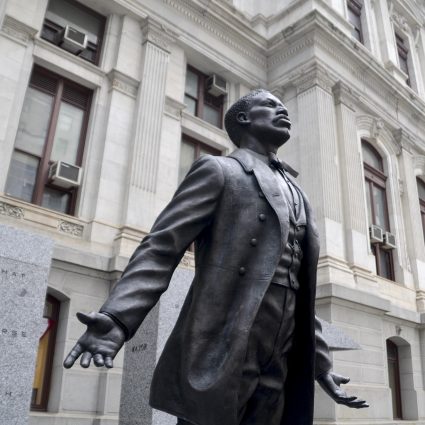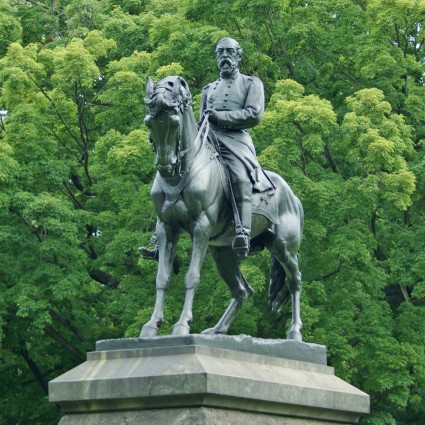At A Glance
Take a closer look at City Hall’s central pavilions by clicking on the tabs above (North, East, South, West) or explore the City of Philadelphia’s Virtual City Hall Tour
Designed in the ornate Second Empire style used for the Louvre, it was built amid a swirl of political controversy – Critics called it “the tower of folly” and “the marble elephant”
Covering four and a half acres of Penn Square, City Hall remains today the tallest masonry-bearing building in the world
The exterior and interior contain over 250 works of sculpture, many of which relate to Philadelphia’s government and history, principally attributed to one man, Alexander Milne Calder
The central pavilions have a geographic theme: the north bears images of Europe; the east, of Asia; the south, of Africa; and the west, of America
City Hall was conceived as the tallest building in the world. (By the time it was completed, however, it had been surpassed by the Eiffel Tower and the Washington Monument.) Designed in the ornate Second Empire style used for the Louvre, it was built amid a swirl of political controversy. Critics called it “the tower of folly” and “the marble elephant.” Nevertheless, in 1957 a committee of the American Institute of Architects declared City Hall “perhaps the greatest single effort of late nineteenth-century American architecture.”
Covering four and a half acres of Penn Square, City Hall remains today the tallest masonry-bearing building in the world. The domed tower rises over 547 feet above the ground. Most remarkably, the exterior and interior contain over 250 works of sculpture, principally attributed to one man, Alexander Milne Calder.
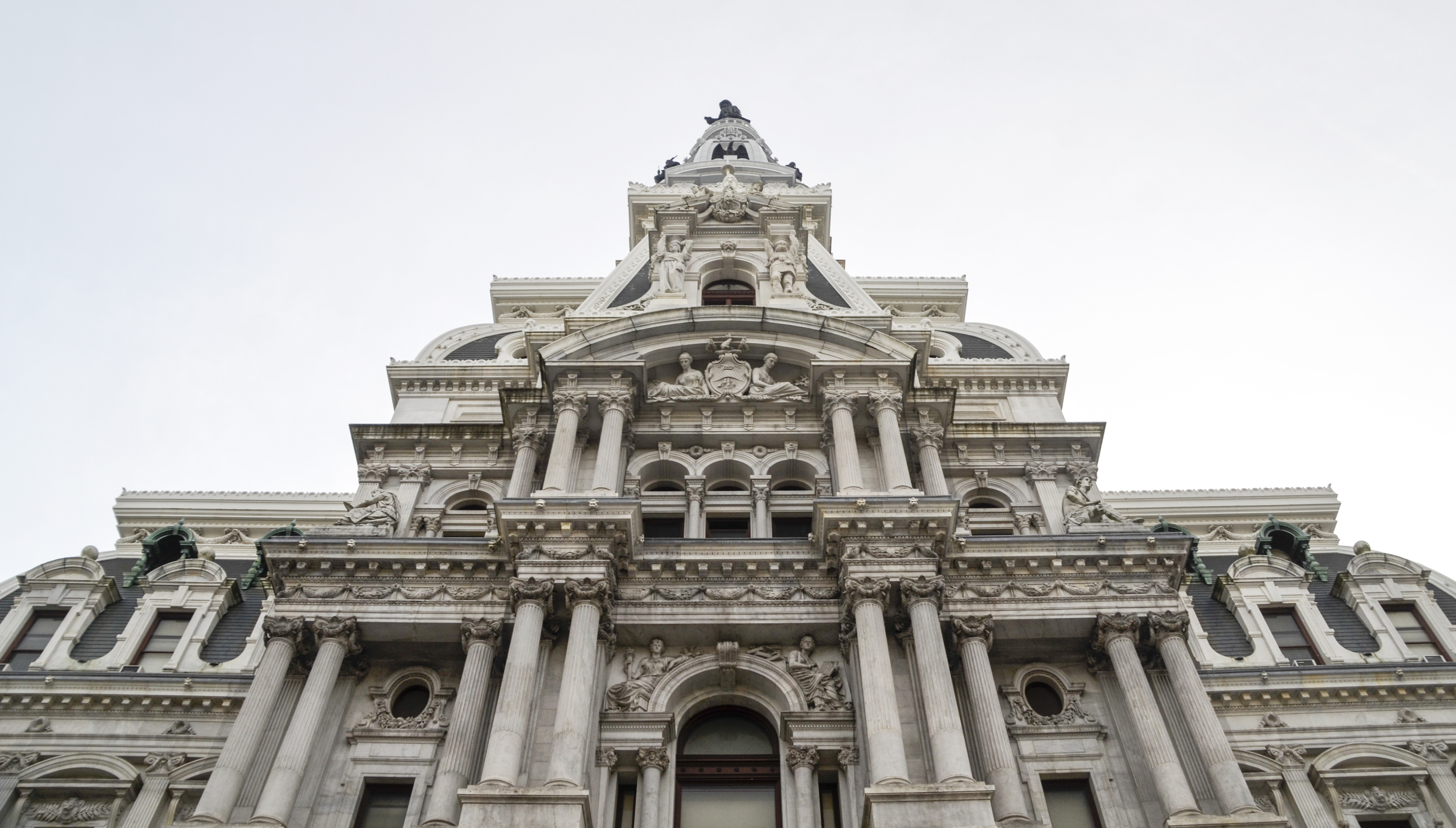
In the earliest drawings, the building had little or no sculpture; the artistic program seems to have evolved as the work progressed. The external facades of the central pavilions follow the pattern shown in the tabs above (North, East, South, West). The archway entrance in the north central pavilion led to the chambers of the Select and Common Councils; hence, many of the sculptures on that facade relate to Philadelphia’s government and history. William Penn’s face in the keystone recalls the original government; the spandrel figures of a pioneer and an Indian suggest the city’s early history; the figures symbolizing Liberty, Fame, and Victory refer to the achievements of a wise legislature. The east central pavilion, where the entrance served the mayor’s office, follows a similar theme. Since the south central entrance led to the law courts, that facade emphasizes law and its associated functions and virtues. On the west central archway, through which prisoners were brought for trial, the sculpture offers a keystone face of Sympathy and reminds the accused of the value of Repentance, Prayer, and Meditation.
The central pavilions also have a geographic theme: the north bears images of Europe; the east, of Asia; the south, of Africa; and the west, of America. Sculptures within the entryways reinforce the various themes of the facades; for instance, the northern entrance continues its celebration of Philadelphia’s government and history with interior images of Suffrage, Education, Navigation, Commerce, and Poetry.
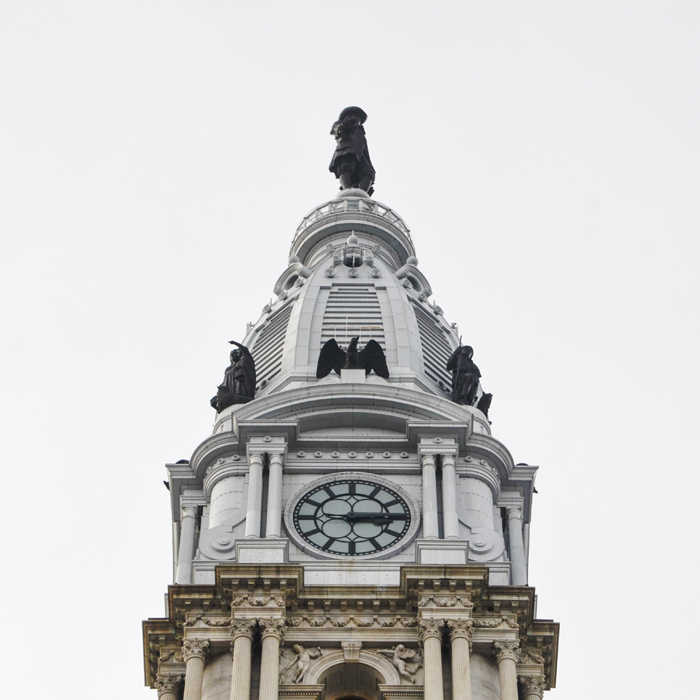
On the tower, below the dominating figure of William Penn, stand four colossal bronzes, each 24 to 26 feet tall. At the southern corners–facing the area where Swedes had settled before Penn’s arrival–are a Swedish man with his son and a Swedish woman with a child in her arms and a lamb at her feet. At the northern corners stand representatives of the region’s Native Americans, a man with his dog and a woman with her child. Between these sculptures, facing north, south, east, and west, are four giant bronze eagles.
In the crypt below the tower, the column capitals are carved with figures representing the races of humankind, and animal heads on the walls symbolize the continents. Elsewhere in the building are sculptures representing the seasons, the elements, virtues and vices, heroes, arts and sciences, trades and industries. As the city’s Historical Commission declared in 1981, City Hall is “as much a work of art as an architectural and engineering wonder.”
Adapted from Public Art in Philadelphia by Penny Balkin Bach (Temple University Press, Philadelphia, 1992).
North Central Pavilion (Portal)
Allegorical theme – Philadelphia government and history
Continental theme – Europe
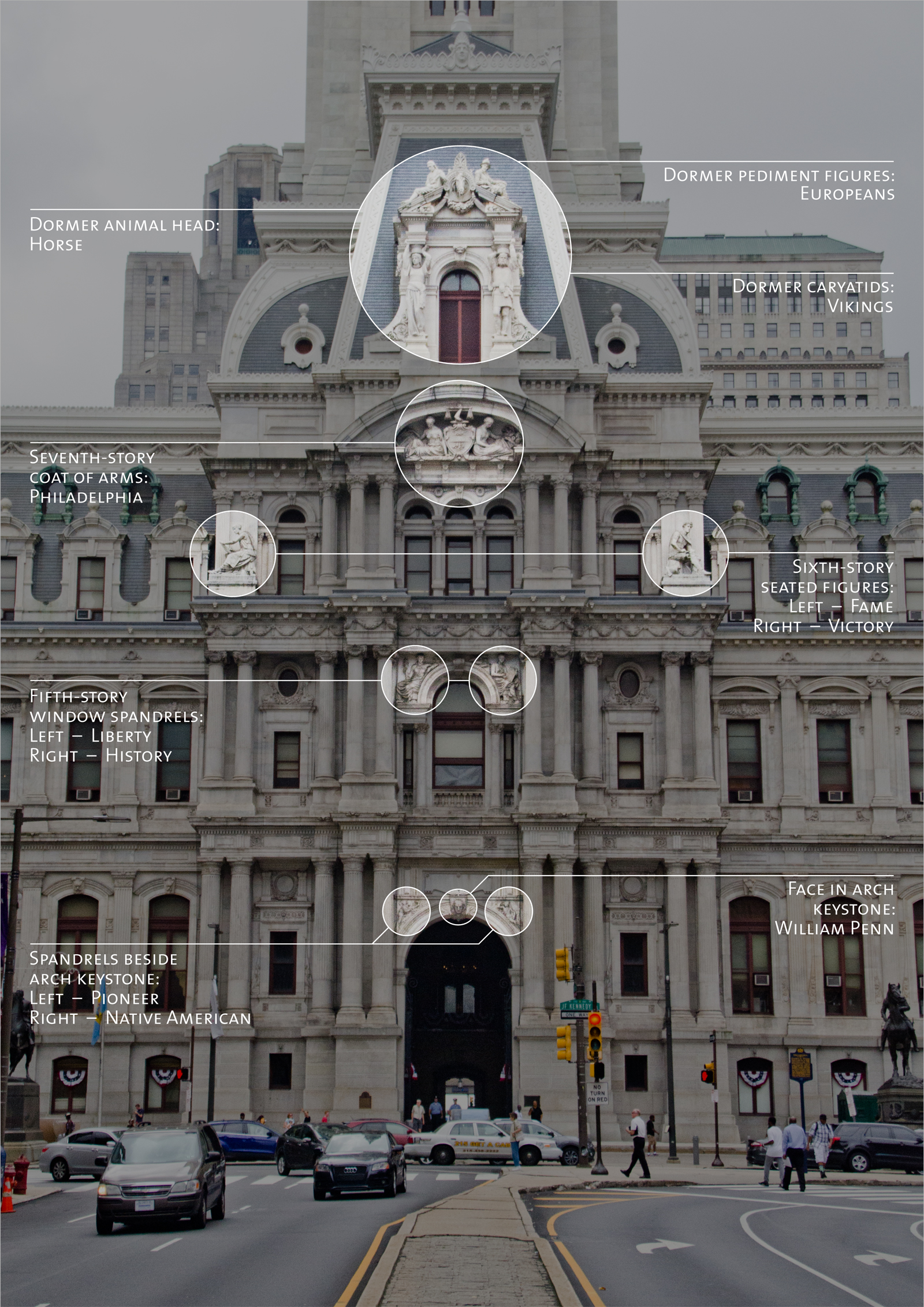
Main elements top to bottom:
Dormer pediment figures – Europeans (Religious male, Spaniard)
Dormer animal head – Horse
Dormer caryatids – Vikings
Seventh-story coat of arms – (City of) Philadelphia
Sixth-story seated figures:
Left – Fame
Right – Victory
Fifth-story window spandrels:
Left – Liberty
Right – History
Face in arch keystone – William Penn
Spandrels beside arch keystone:
Left – Pioneer
Right – Native American
East Central Pavilion (Portal)
Allegorical theme – Philadelphia history and attributes
Continental theme – Asia
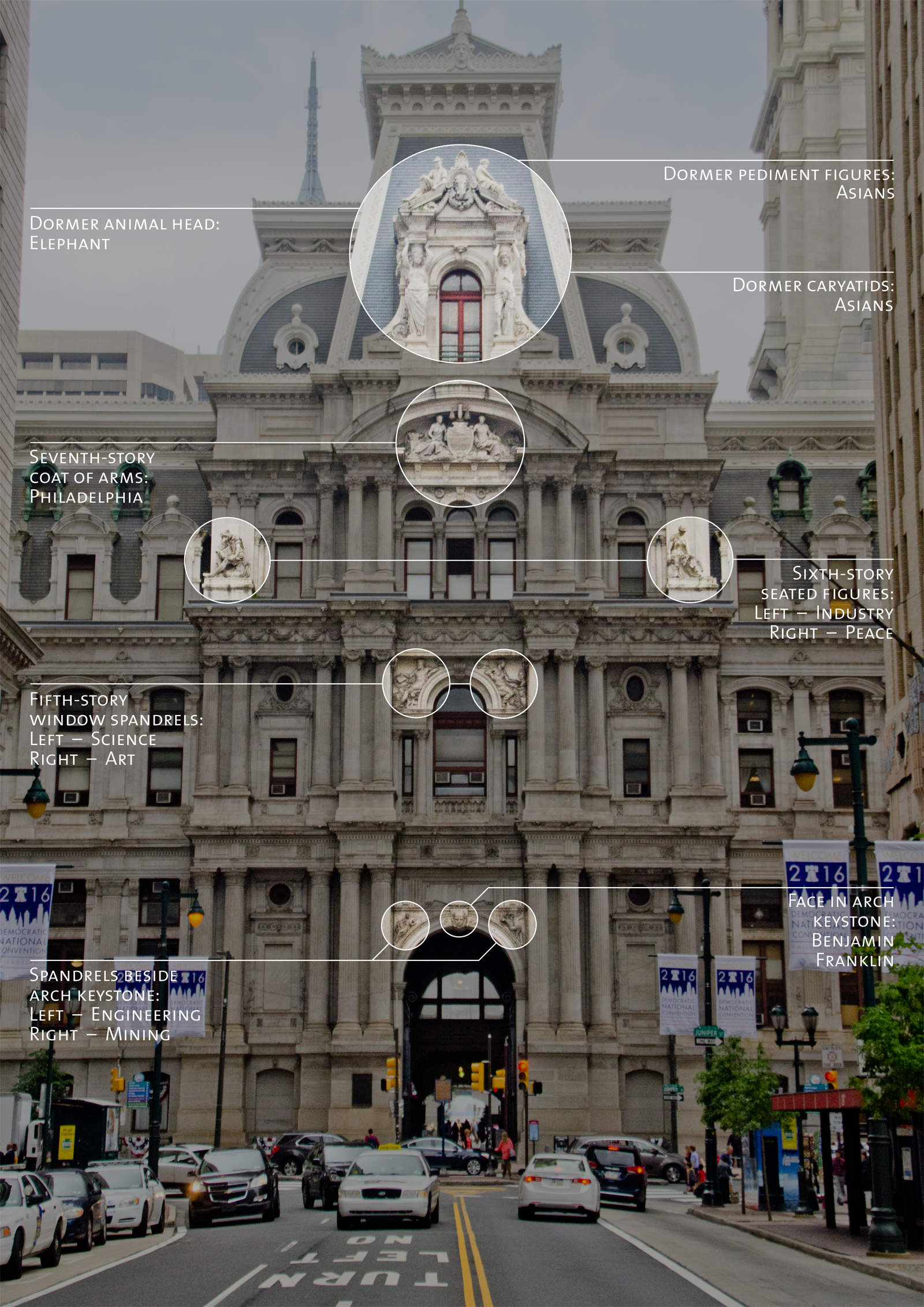
Main elements top to bottom:
Dormer pediment figures – Asians (Male Asian, Female Asian)
Dormer animal head – Elephant
Dormer caryatids – Asians (India)
Seventh-story coat of arms – (City of) Philadelphia
Sixth-story seated figures:
Left – Industry
Right – Peace
Fifth-story window spandrels:
Left – Science (Education)
Right – Art
Face in arch keystone – Benjamin Franklin
Spandrels beside arch keystone:
Left – Engineering
Right – Mining
South Central Pavilion (Portal)
Allegorical theme – Justice
Continental theme – Africa
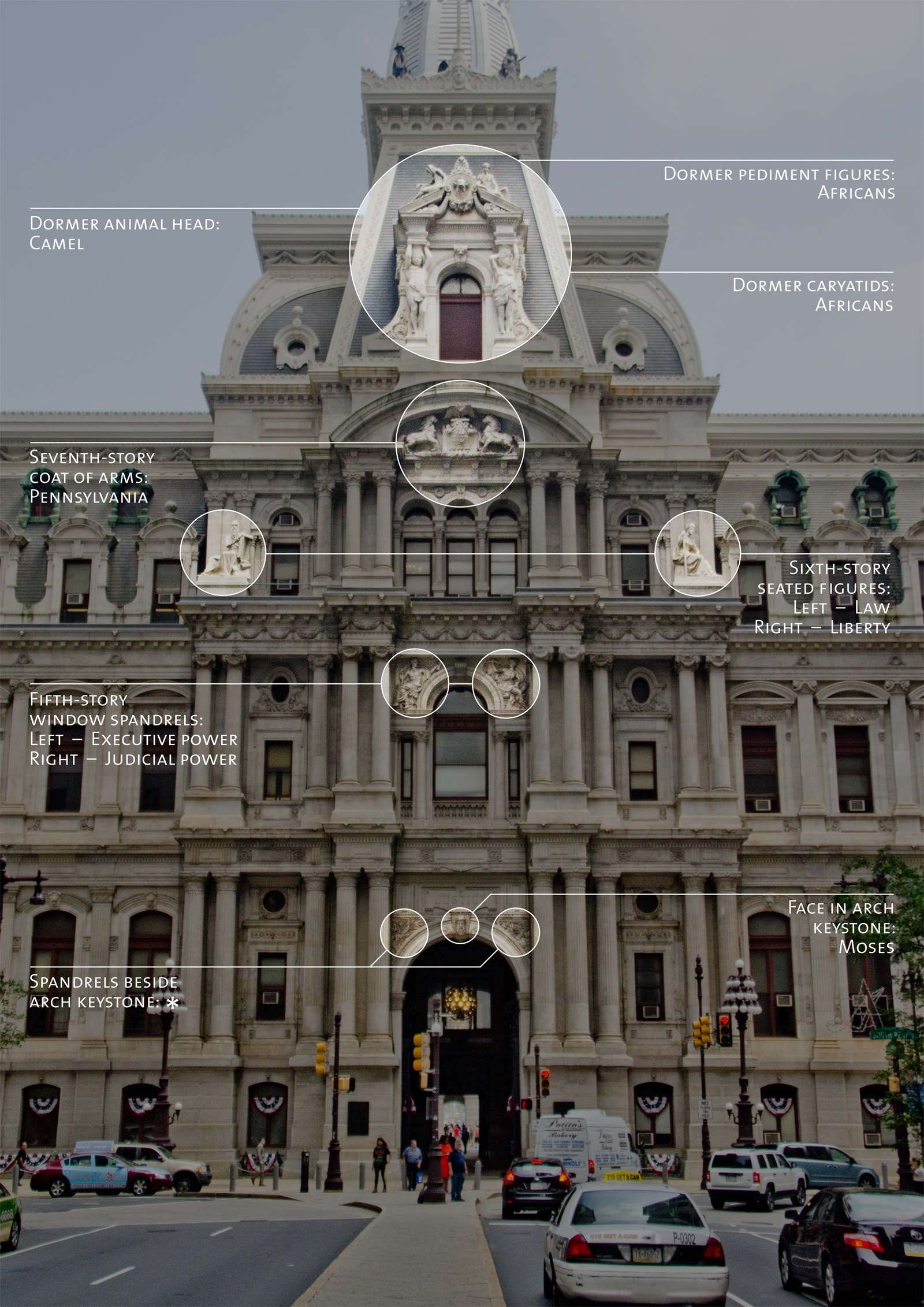
Main elements top to bottom:
Dormer pediment figures – Africans (Egyptian, Zulu African)
Dormer animal head – Camel
Dormer caryatids – Africans
Seventh-story coat of arms – (Commonwealth of) Pennsylvania
Sixth-story seated figures:
Left – Law
Right – Liberty
Fifth-story window spandrels:
Left – Executive power (Law)
Right – Judicial power (Justice)
Face in arch keystone – Moses (Lawgiver)
Spandrels beside arch keystone:
* The images in the south central archway spandrels seem to pertain to agriculture or harvest, but their symbolic significance is unclear
West Central Pavilion (Portal)
Allegorical theme – Rehabilitation of lawbreakers
Continental theme – America
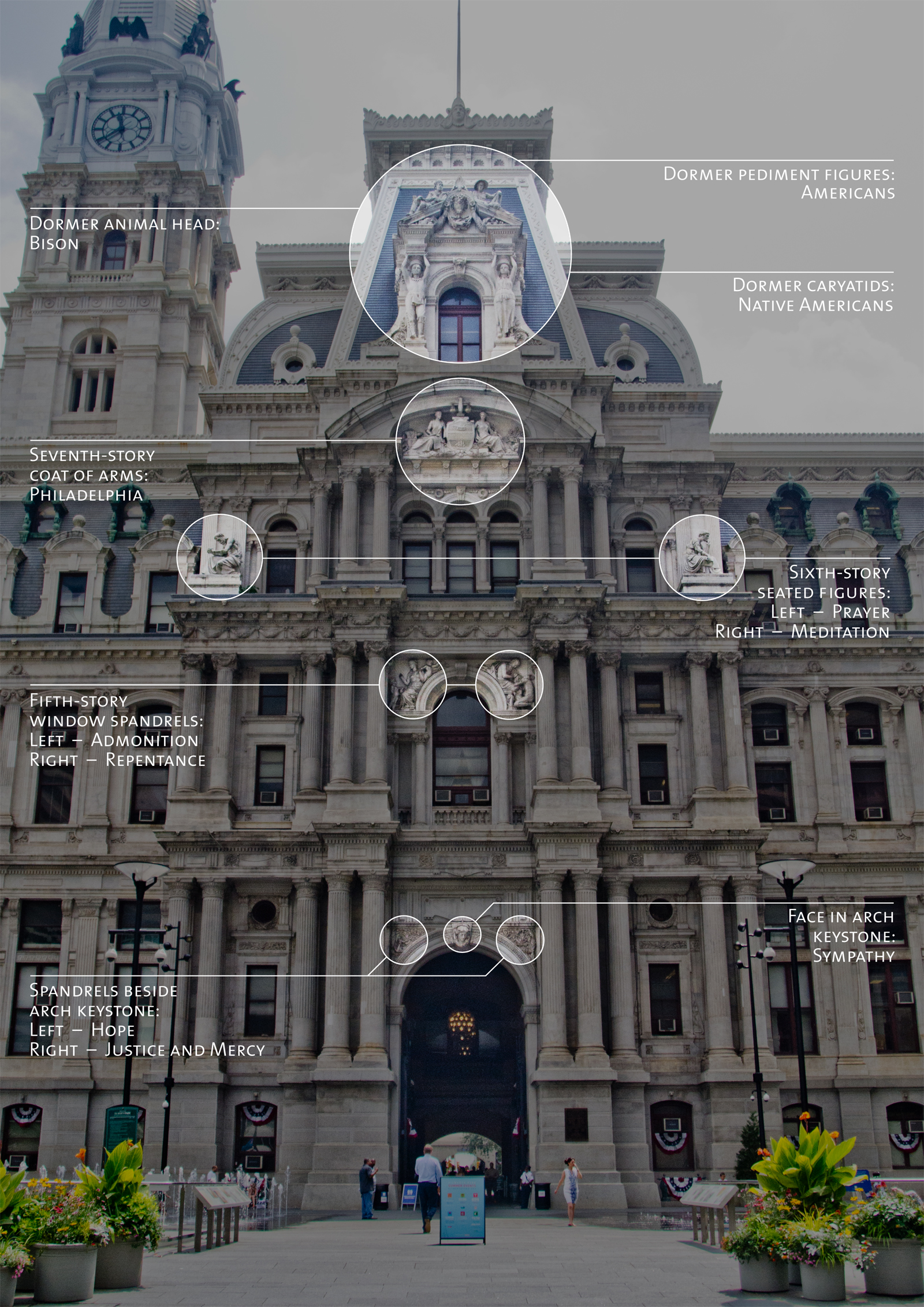
Main elements top to bottom:
Dormer pediment figures – Americans (Male pioneer, Female pioneer)
Dormer animal head – Bison (Buffalo)
Dormer caryatids – Native Americans
Seventh-story coat of arms – (City of) Philadelphia
Sixth-story seated figures:
Left – Prayer
Right – Meditation
Fifth-story window spandrels:
Left – Admonition
Right – Repentance
Face in arch keystone – Sympathy
Spandrels beside arch keystone:
Left – Hope
Right – Justice and Mercy
This artwork is part of the Around City Hall tour
